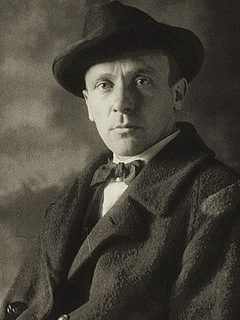It’s what you do for your mates.
– Grant Kereama, Jonah Lomu’s kidney donor.
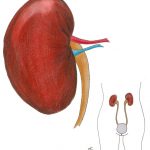
The kidney’s main job is to filter waste products and excess fluid from the blood, excreting thisas urine. Theyform two bean-shaped organs, except in around 0.2%
of the population where the kidneys are fused into a single horseshoe-shaped structure; a condition which the actor Mel Gibson has.
Early childhood Kidney diseases (eg. renal tubular acidosis) often cause short stature due to the imbalance of salts and acids reducing appetite and preventing calcium being deposited in bones. Gary Coleman was born with a congenital kidney disease as a result of an autoimmune reaction, which restricted his growth leading to his shortened stature of 142 cm.


In order to perform the task of filtering waste products from the blood, the kidney uses special membranes which act as selective barriers. Defects in these membranes can lead to kidney failure characterised by the presence of high concentrations of blood in the urine (thin basement membrane disease). While defects and thickening of the arteries (nephrosclerosis) or the development of cysts (polycystic kidney disease) in the kidneys can also impair filtering function.
Renal Tubular Acidosis
Renal tubular acidosis results in short stature, crippling weakness, kidney stones and untimely death if left untreated. Caused by the kidneys failing to excrete acids into the urine, the treatment generally includes sodium bicarbonate to neutralize the acids in the blood.
The ailments of Tiny Tim in Dickens’s novel “The Christmas Carol” is suggestive of this disorder – the treatment that Scrooge purchased for Tim may well have been sodium bicarbonate. Dickens had a keen interest in medical disorders and included many characters in his novels, with ailments that he had observed among friends and acquaintances. Tiny Timwas supposedly based on the invalid son of a friend who owned a cotton mill in Ardwick, Manchester.
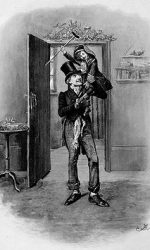
Thin Basement Membrane Disease
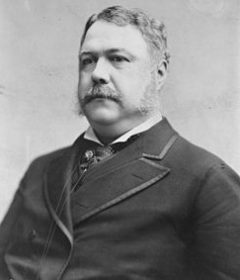
Thin basement membrane disease, or Alport syndrome in more severe cases, results from inherited defects in the kidney membranes used to filter waste products from the blood. This is characterised by presence of high concentrations of blood in the urine.
This was first described in the male members of a British family by Dr. Cecil Alport in 1927 as most cases result from defects in a gene on the X chromosome.
This symptom of blood in the urine occurred in the US president, Chester Alan Arthur, in 1882, along with fatigue and irritability. Shortly later he was diagnosed with kidney disease (Bright’s disease – caused by kidney stones), a fact that was kept secret by Arthur’s staff.
Polycystic Kidney Disease
Polycystic kidney disease is one of the most common life-threatening genetic disorders resulting in the development of large numbers of cysts in the kidney.
The first documented case appears to have occurred in Stefan Bathory, King of Poland who died in 1585 at the age of 53. The surgeon who performed an autopsy described the kidneys as “large like those of a bull with an uneven and bumpy surface”.
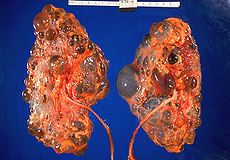

American Humorist and news column writer, Erma Louise Bombeck, died from this disease in 1996.
Nephrosclerosis
In nephrosclerosis high blood pressure leads to a thickening of arteries in the kidney, reducing its ability to function properly.
The Russian writer Mikhail Bulgakov died of kidney disease in 1940, suffering from the same symptoms as his father and dying at the same age of 48 suggesting inheritance of a dominant gene. Educated as a medical doctor, Bulgakov almost certainly knew the implications of his failing health. He therefore focused the last months of his life on trying to finish his final novel, the political and satirical masterpiece, “The Master and Margarita”, which was critical of the Stalin regime. He had destroyed several previous drafts of the novel for fear of arrest by the soviet secret police. It seems very likely that realisation of his impeding death prompted him to finally publish the novel even though it was banned in his native Russia.
